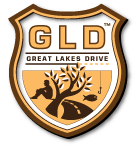Whittlesey Creek
Whittlesey Creek
Whittlesey Creek National Wildlife Refuge, Wisconsin
Whittlesey Creek is classified a Class 1 trout stream by WDNR. This means that it is considered a high quality trout waters that have sufficient natural reproduction to sustain populations of wild trout, at or near carry capacity. Consequently, streams in this category require no stocking of hatchery trout. These streams or stream sections are often small and may contain small or slow-growing trout, especially in the headwaters.
Whittlesey Creek Overview
Whittlesey Creek originates at two spring-fed streamlets from the sandy upper portion of the watershed that during normal flow conditions are internally drained and do not provide a continuous flow downstream. Just over a mile above the creek’s confluence with its main tributary, North Fork Whittlesey Creek, numerous springs form a perennial stream. The stream has a fairly steep gradient in parts of the watershed, flowing through a band of highly erodible red clay soils before emptying into Chequamegon Bay. The stream has an estimated low flow of nine cubic feet per second. Its highest recorded flow was 152 cfs, with an apparent summer average between 13 and 30 cfs. The watershed is lightly populated and lightly farmed, almost half of the watershed forested. The lower four or so miles of stream, from the confluence from North Fork Whittlesey Creek to the mouth, are considered Class I trout waters (WDNR appraisal report). Two small feeders join the creek, which also support spawning trout and salmon species. At the mouth, a small stream known as Maryannes Creek or Little Whittlesey Creek, which historically joined Whittlesey Creek near the mouth, was dredged in the past to make it a separate stream discharge. The two channels now pass within thirty feet of one another. In 1993, beaver activity caused a portion of Whittlesey Creek’s flow to divert to the Little Whittlesey. Some migratory Lake Superior species have been surveyed in Little Whittlesey Creek.
The stream is an important spawning and rearing stream for migratory fish, accounting for as much as 35 percent of the coho salmon spawning in Wisconsin waters. The creek’s drainage area includes a portion of the Chequamegon National Forest that was recently clear cut, then drops through severely eroded red clay valleys interspersed with horse farms, orchards and open fields. Historically, the red clay soils of this geologically young watershed were anchored by white pine forest cover. This forest cover was completely removed by the early part of the century. Aspen and pastureland took the place of the protective conifers. In the 1950s and 1960s, a restoration project to stabilize banks resulted in willow plantings that have begun to die as they reach maturity. As the willows fall, they again destabilize the banks. Interspersed with the red clay soils eroding into the stream are sands that become deposited in the riverbed, rather than carried out into the bay with the clay.
Erosion has remained a problem, often closing off the mouth of the stream to such a point trout and salmon can’t enter the creek to spawn. Also, the silt and sand can cause turbidity in the water, or batter the young fry in the stream. In 1991, this stream was selected as a small-scale priority watershed project. The planning phase of this project is underway. Landowner participation is necessary for the project to be completed. That participation is usually in the form of cost-shared installation of best-management practices to protect water quality. This project is fairly unusual since their are no major sources of conventional, agricultural or urban runoff pollutants. Projects planned for the watershed include bank stabilization, clearing of the channel and potentially reintroducing conifers to the watershed. There have been discussions about the application of best-management practices for forestry activities (Holiday 1995).
The water marked for higher production is located north of Hwy 2 and under 13, ending in the Whittlesey Creek National Wildlife Refuge. Check access maps.
Specific Map
Source & More Detail
Wisconsin Trout Stream Maps
Wisconsin Public Access Maps
All content the property of WDNR

